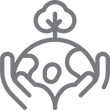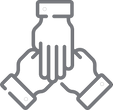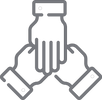The People behind
Ayo Oslo

Technological advances have made it cheaper and easier for us to own clothes. Today, we own five times more clothes than our grandparents.
Knowing the true story behind our garments is a part of our integral approach in our bid to making clothes with integrity.
We make it our business to know the people involved in making our garments.
Image show Ayo Oslo founder's visit with Mongolian herder.

A significant portion, approximately 40% at the time of writing, of Mongolians still lead a traditional nomadic herder's lifestyle, primarily relying on livestock such as sheep, goats, yak, camels, and horses.
The herders and their animals share a mutually beneficial relationship, each depending on the other for survival. The herders rely on their animals for sustenance and wool, while the animals depend on the herders for protection from predators like wolves and foxes.
The herders and their entire families participate in hand-combing their animals during the spring season. Subsequently, the wool is collected for processing.

We carry out inspection prior to manufacturing in order to ensure:
• Production takes place in decent working conditions.
• Our collaborators adhere to national labor laws.
• Safety measures in the factory are upheld.
• Compliance with law-regulated working hours.
• Workers have the opportunity to join workers' unions.
• Women are encouraged in leadership roles.
• Gender equality and non-discrimination are practiced.
• No child labor is involved.
• Local investment supports environmental activities.
• Pollution prevention is implemented.
Our collaborators employ water filtering in the wool washing process. They recycle water for various washing purposes and ensure it is filtered before returning it to nature. Furthermore, they are actively engaged in green initiatives within their local community, taking significant steps toward a greener environment.

The majority of laborers in the Mongolian manufacturing sector are women. Balancing work responsibilities with childcare can be challenging for them.
As such, our collaborator offers child-care services to support their female employees, addressing the everyday challenges many of them face. This initiative promotes the continuous and productive labor participation of a larger number of women.


















